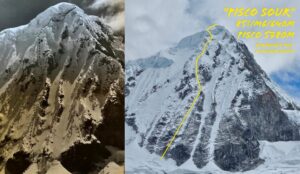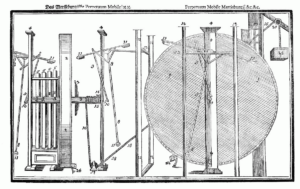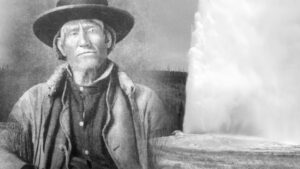As unsettling as they are, dead bodies can offer fascinating insights into past lives and cultures. Here are some of the world’s best-preserved bodies and the stories behind them.
Tollund Man
In 1950, a family in northern Denmark was excavating a peat bog for fuel. After digging 2.5m down, the mother discovered a shriveled male corpse with black and leathery skin. His eyes were closed as if asleep, his body curled into a fetal position. He wore a wool hat, a hide belt, and had a noose around his neck.
Danish police immediately assumed that he was a murder victim. Eventually, they discovered that the mysterious dead man had remained buried in the peat bog for thousands of years. Dating technology at the time could only determine that he was post-Stone Age.
Later, more advanced carbon dating came up with a more precise date of death: 405 BC to 380 BC. This is at the start of the Iron Age.
Scientists also determined that the man was in his 30s or 40s, had beard stubble, and that his death had come from hanging (no surprise there, given the noose). They even discovered that his last meal was porridge and fish. Intestinal analysis also found tapeworms and two other parasites.

Tollund Man. Photo: Sven Rosborn/Wikipedia Commons
Archaeologists agree his death was part of a ritual, similar to the Elling Woman and Grauballe Man. It is possible that he was a sacrifice to the gods. His curled position, in particular, indicates care and concern for the individual.
Bog bodies are more common in northern Europe. When moss, soil, and water mix, oxygen does not aerate the soil. This suppresses the bacteria that break down a typical body. In addition, the cold temperatures slow down decomposition. This is why most bog bodies are in impressive condition.
Lady Dai
Xin Zhui or “Lady Dai” was the wife of nobleman Li Chang during the reign of China’s Han Dynasty (206 BC to 220 AD). Written sources described Lady Dai as a renowned beauty who indulged in the most decadent luxuries life had to offer. Unfortunately, this lifestyle led to an onslaught of ailments including obesity, diabetes, and coronary thrombosis. The myriad conditions eventually took her life. She died of a heart attack at age of 50 in 163 BC.
In 1971, researchers uncovered her lavish tomb in Changsha in southern China. Like a Russian doll, her body was encased in a black coffin which was encased in three further coffins. The tomb was air-tight and sealed with layers of clay and charcoal.

Xin Zhui’s body. Photo: Huangdan2060/Wikipedia Commons
The body itself was wrapped in layers of silk and laid beside her finest clothes, spices, flowers, makeup, and other luxuries. The body was extremely well preserved, to the point where the skin was intact and blood (Type A) was still present in her veins.
There is evidence of chemical embalming, most likely an acid, that is still unidentifiable to researchers. Her body is one of the world’s few ancient corpses that is capable of withstanding autopsies for medical research. The long list of ailments she suffered from included heart disease, osteoporosis, gallstones, and arteriosclerosis.
La Doncella
Found on the Llullaillaco stratovolcano in 1999 by John Reinhard, the Inca maiden or “Sun-Virgin” is one of the world’s best-preserved bodies. It dates back to the 1500s, the height of the Inca Empire’s power and influence.
A common religious practice was child sacrifice or capacocha. The Incas made sacrifices on special occasions, such as for the funeral of an emperor, or during crises like famines. “Perfect” children of nobles (without any blemishes) ate a strict diet of llama meat, maize, alcohol (chicha), and coca leaves for a year leading up to the sacrifice. When the time came, priests sedated the victim with alcohol and coca. Then, they left them to die in 1.5m tombs at over 6,700m.

Llullaillaco Inca maiden. Photo: Pedro Groover
La Doncella was 15 years old when she died. Her body position suggests she died peacefully, with no signs of struggle or violence. She was wearing a colorful dress and headdress. The mountain’s high altitude and freezing temperatures are responsible for the preservation of her body.
Vladimir Lenin
The founder of the Soviet Union, Vladimir Lenin died in 1924 of a blood disease. Fifty-six days after his death, people noticed that his body had not begun to decompose. Predictably, some declared it a miracle, a sign of Communism’s legitimacy.
Meanwhile, scientists worked to find a way to preserve the body. They settled for embalming it in a concoction of glycerol, hydrogen peroxide, alcohol, acetic acid, and sodium and potassium acetate. Periodically, some dark spots appear on his skin which is then treated with injections of chemicals. Those in charge of his body removed most of his organs but left his skeleton and skin.

Lenin’s body in Moscow. Photo: AFP
From 1924 to the fall of the Soviet Union, over 200 chemists maintained his body, bathing and cleaning it each year. Now, a team of six from the Centre of Scientific Research and Teaching Methods in Biochemical Technologies takes care of the body.
His body costs 13 million rubles (over $200,000) per year to maintain. After almost 100 years, his body is still intact and on display.
Greenland mummies

The body of a six-month-old Inuit baby. Photo: Choffa/Wikipedia Commons
In 1972, two fishermen came across eight Qilakitsoq mummies in Northwest Greenland. In two rocky graves, the family included six women, a two-year-old, and a six-month-old baby. The mummies were wearing layers of warm clothing and furs. Five of the women had facial tattoos, indicating that they were married. Their hair, skin, and nails were intact. The sub-zero temperatures and dry air significantly delayed decomposition.

The mummies were discovered in open graves under this overhanging ledge, about 10km from the village of Uumannaq. Photo: Jerry Kobalenko
The six-month-old baby was buried alive and was best preserved. This is because he froze faster because of his small size. He might have been buried alive when his mother died, after the Inuit tradition that sought to unite mothers and children in the afterlife. However, no one knows exactly how the mummies perished. Some suggest they froze to death, but disease, drowning, and poor health are all possible causes.
Franklin expedition bodies
The 1845 Franklin Expedition ended tragically, with starvation and cannibalism. Ultimately, all 129 crew members died.
The mummified remains of three crew members turned up in the 1980s on Beechey Island, just off the southwestern tip of Devon Island in the Canadian High Arctic. These bodies, buried in the permafrost and encased in ice, were incredibly well-preserved. The first to be exhumed was John Torrington. His companions, John Hartnell and William Braine, followed. Even these men’s eyes and sodden clothes were intact.

John Torrington’s 1984 exhumation made such a splash that Time Magazine declared him one of their Men of the Year. Photo: YouTube
Torrington’s body had high lead levels, possibly from the lead seams on their canned food, a new technology at the time. Some thought that this might have caused the deaths, although this was likely just a contributing factor. Torrington probably died from pneumonia. Hartnell was done in by malnutrition and zinc deficiency. The fate of Braine, whose body was in the worst condition, remains a debate.






